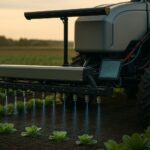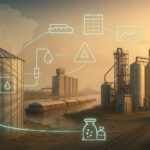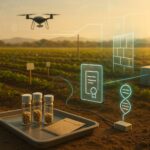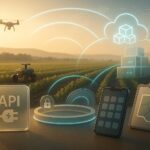Syngenta just flipped a key switch: its Cropwise digital suite—used across tens of millions of hectares—now has an “Open Platform” for outside developers. In practical terms, it exposes APIs for farm data models (growth stage, yield outlook, seed-rate advice), remote sensing, and core entities (orgs, fields, seasons)—with OAuth2 access and documentation that looks ready for real products, not just demos. If done well, this could be agriculture’s closest step yet toward a true “farm OS” where third-party software is first-class.
Table of Contents
ToggleWhat changed—and why it matters
Syngenta says Cropwise now invites third-party developers “worldwide,” explicitly positioning AI as an equalizer for smaller farms. The platform already covers ~70 million hectares across 30+ countries, and Syngenta’s broader digital footprint (Cropwise plus other tools) claims ~100 million hectares—a base that gives any open API genuine distribution. For investors, that’s the significance: distribution plus developer leverage is how ecosystems compound.
The announcement also leans on fresh research with IPSOS: the digital divide in farming is widening; older or smaller-scale growers often view AI as distant or complex; and adoption hinges on trust, data control and proof of local results. Building a platform others can plug into is Syngenta’s answer.
What’s actually “open” today
The Open Platform site lists concrete building blocks:
- AgInsights models: growth stage tracking, relative yield, seed-density recommendations, productivity zones, field-variability index, and (coming) abiotic stress risk.
- Remote sensing: imagery, vegetation indices, NDVI zones and time-series, change reports, elevation tiles.
- Core services: organizations, properties, fields, seasons, crop zones, products, and “ag operations” sync.
The dev docs show OAuth 2.0 flows (client credentials and auth code), a production base URL (api.cropwise.com), and step-by-step guides for tokens, endpoints and payloads—again, the trappings of a platform meant for external teams, not just internal squads. Access appears curated (you request credentials), but the tech surface looks standard and enterprise-friendly.
Two signals to watch:
- “Beta” labels sit on many services—a tell that the catalog will evolve quickly and that early adopters can influence the roadmap.
- Data rights language: Syngenta reiterates that no individual grower data is shared without owner consent—essential in an era of the EU Data Act and ag-sector data codes.
How it stacks up against Deere, FieldView, PTx/Trimble and CNH
If you build ag software, you’ve had integration choices for years:
- John Deere Operations Center offers a mature developer program and a marketplace-style roster of connected partners. It exposes field operations, equipment and precision ag APIs, with data-sharing managed via permissions inside Operations Center.
- Bayer’s Climate FieldView runs a developer platform and is deeply embedded across agronomy workflows, with connectors and partner guides.
- PTx/Trimble (FarmENGAGE) provides APIs for as-applied data, prescriptions and resource alignment, with a long history of device/workflow integrations.
- CNH FieldOps recently consolidated its APIs to span agronomic and machine telemetry, with an active developer portal and FAQs.
What’s new here is less the existence of APIs and more what Syngenta is opening: agronomic models derived from its proprietary datasets and trials, not just pipes for file transfer and machine telemetry. That moves the competitive conversation from “who controls the data conduit?” to “whose agronomy engine do developers trust to ship inside their apps?”
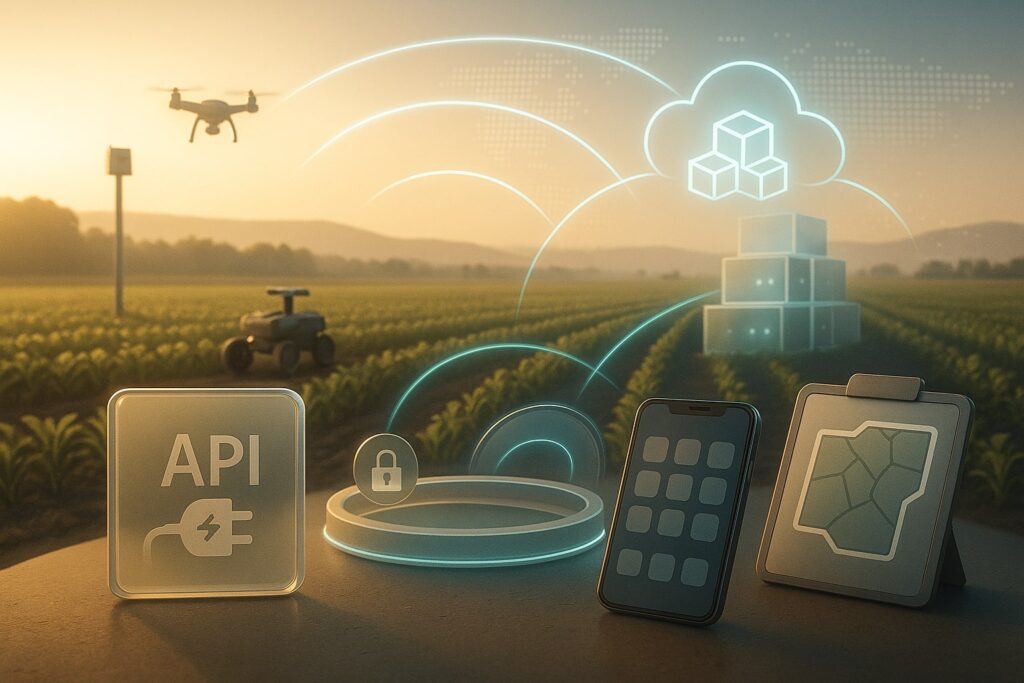
Regulation tailwinds: the Data Act era
In Europe, the EU Data Act entered application in September 2025, hardening expectations that data generated by connected products be accessible and shareable under fair terms. Alongside the sector’s voluntary EU Code of Conduct on farm data, this is pushing platforms to make interfaces clearer and permissions explicit. Cropwise’s explicit consent stance and OAuth scopes sit comfortably in that direction.
The model behind the models
Syngenta’s catalog hints at where the value is accruing:
- Crop-state signals (growth stage, variability) power timing decisions on inputs, logistics and harvest.
- Seed density and relative yield tie digital advice to product decisions (a classic conversion path for an inputs company).
- Remote-sensing tiles/indices lower the barrier for startups to add “satellite-native” features without building an EO stack.
The company has also been deepening remote sensing ties (e.g., with Planet) and rolling out GenAI layers (Cropwise AI) on AWS—both of which can now be productized by third parties through documented services rather than bespoke partnerships.
Smallholders, trust—and a bigger TAM
Syngenta’s IPSOS study is blunt: many growers already use “hidden AI” (imagery, CV, precision application) without calling it AI, but older and resource-constrained farmers are likelier to stall without simple onboarding and neighbor-validated ROI. For developers, that means localized UX and proof-plots beat clever model names; for investors, it suggests the platform’s growth will track how well third parties turn these models into region-specific products that feel familiar, work offline, and respect data ownership.
Risks & frictions
- Curation vs. openness: Access appears request-based; there’s no public self-serve key today. That can curb spam and protect farmers—but it also slows indie builders unless Syngenta streamlines approvals.
- Standards & portability: Cross-platform farms will still straddle Deere/FieldView/PTx/CNH. Vendors like Leaf have built a business on normalizing that sprawl; Cropwise will need to play nicely (or be compelling enough to be the hub).
- Commercial clarity: Pricing and revenue mechanics for API consumption aren’t yet public. Without transparent tiers (per-acre, per-call, or partner rev-share), developers may hesitate to make Cropwise their primary dependency.
What to watch next (fast indicators)
- Early lighthouse apps that ship on Cropwise first (e.g., localized spray timing, irrigation or input-finance underwriting).
- Speed of credentialing for startups and regional ISVs. An “apply and wait” process risks losing momentum to incumbent portals.
- Model cadence: how quickly AgInsights adds crops and geographies; whether “Beta” tags turn to GA before the 2026 season.
- Data-rights posture: Ag-data transparency seals and Data Act-aligned contracts could become a differentiator with co-ops and FPOs.
Investor take
A defensible platform flywheel in ag rarely comes from pure “pipes.” It comes from distribution × embedded intelligence × trusted governance. Syngenta arrives with all three: millions of hectares worth of digital touchpoints, models rooted in trials and field data, and messaging that foregrounds consent and proof of benefit. If developer onboarding is smooth—and if pricing is predictable—Cropwise’s Open Platform could shift bargaining power toward software that runs on top of agronomy, not just alongside machines.
For founders, that means two immediate opportunities:
- “AI-in-a-box” agronomy for specialty crops and smallholders, localized by language, phone-first UX and co-op workflows;
- Decision glue across mixed fleets: use Cropwise models as the agronomy layer while still syncing machine data from Deere/CNH/Trimble/PTx where farmers already live.
Bottom line: the platform that wins farmer consent and developer loyalty will set the pace. Syngenta has a head start; execution will decide.

